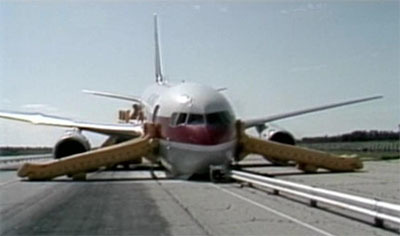
Emerging technologies are ushering in more fuel-efficient, comfortable and exotic aircraft. Get ready for the future of flight
ON THE evening of July 23rd 1983, Air Canada Flight 143 ran out of fuel after a series of human errors. The new Boeing 767, lightly loaded with 61 passengers and eight crew, became a glider with only 8,686 metres (28,500 feet) of altitude to reach the nearest airport at Winnipeg, around 120km (75 miles) away. Ten minutes later it became clear that the plane was losing altitude too fast to make it.
The pilots changed course, hoping to reach a former air-force base near the town of Gimli. They were unaware that its runways had been converted into a drag-racing track. Spectators scattered when they saw the silent approach of the aircraft. As the aircraft’s wheels hit the racetrack, the front landing gear collapsed and the nose slammed into the tarmac, sending sparks flying. Scraping against a guard rail that divided the track in two, the aircraft skidded to a stop. No one was killed.
Had the pilots been flying one of today’s more aerodynamic airliners, they could easily have reached Winnipeg’s airport, says Carl Holden, a recreational-glider instructor and head of Holden Dynamics, a consultancy based in Sydney that advises Australia’s Civil Aviation Safety Authority. Today’s airliners would glide about 25% farther, he says, and the next generation promises additional gains.
Gliding distance is an imperfect measure of an airliner’s aerodynamic efficiency, since it is not designed for gliding. But the Gimli Glider incident, as it became known, helps illustrate the magnitude of advances in aviation technology. Improved efficiency means that Boeing’s new 787 airliner consumes about 40% less fuel per passenger than its 1970s aircraft. Airbus and other manufacturers have achieved similar results.
Not all improvements in aircraft technology are incremental. As myriad technologies mature, new sorts of aircraft become possible. Unmanned aircraft have flown at more than five times the speed of sound. Last year a lightweight, piloted Swiss aircraft, Solar Impulse, captured enough solar energy during the day to fly throughout the night. Small drones are being developed with highly efficient wing-bottom infra-red cells that scavenge radiation energy reflected up from the ground. Boeing is developing unmanned spy aircraft capable of staying aloft using hydrogen power for five years without refuelling. Drew Mallow, the project’s leader, calls Phantom Eye, a prototype with a 46-metre wingspan, a “poor man’s satellite”. The future of flight will involve gradual changes in the near term, with the prospect of more radical shifts in the decades to come.
Much research has been driven by efforts to save jet fuel. Having more than doubled in price in recent years, it now accounts for about half of airlines’ operating costs. Even slight gains in efficiency quickly pay off—as a rule of thumb, a 1% improvement knocks more than $1m off a airliner’s fuel bill over its lifetime of roughly 20 years, says Ihssane Mounir, Boeing’s vice-president of sales for China. These savings snowball. Fuel-sipping planes are more profitable, so banks will finance them at lower interest rates.
Time to lose weight
In the push to improve efficiency, wing flaps are now operated with lightweight electrical systems instead of hydraulics. At least one airline, Australia’s Jetstar Airways, is replacing in-flight entertainment kit with Apple iPads, which are much lighter. Flight Sciences International, a consultancy based in Santa Barbara, California, has found that fuselage-insulation blanketing costs airlines unnecessarily: it absorbs humidity and becomes heavier over the years. This is typical of the zeal with which savings are being sought. The only area where technologists have failed to improve efficiency is in reducing the weight of passengers, says John Corl of Flight Sciences. He is only half joking.
Aircraft engineers have for years sought to replace metal components with lightweight plastics reinforced with carbon fibres. Such materials, known as composites, are generally 20-40% lighter according to ATK, an aerospace company based in Utah that makes them for aircraft manufacturers. Composites account for as much as 15% of today’s airliners, but some next-generation aircraft will be more composite than metal, including the Boeing 787 (which enters service this year) and Airbus A350 (due in 2013).







